ANURAG MALLICK & PRIYA GANAPATHY retrace the route of India’s first passenger train from Bombay to Thane in 1853. En-route, they meet co-passengers, vendors and railway employees and use 1853 words to describe their tale
It was not the usual sultry Bombay afternoon. The scorching summer seemed more intense with the crowds milling about. Or perhaps it was the heat emanating from three brand new steam engines. Sindh, Sultan and Sahib were belching smoke ready to tug 14 decorated coaches into history.
At exactly 3:30pm on April 16th 1853, Lady Falkland, wife of the Governor of Bombay, boarded the train followed by 400 invitees, mostly royalty, zamindars, burra sahibs and other dignitaries. Amidst thunderous applause and a 21-gun salute, the train gave a long whistle and rolled out at 3:35pm from Bombay’s Boree Bunder station (later VT/CST) to Tannah (Thana). The three locomotives chugged into the countryside as onlookers cheered from both sides of the tracks under a blazing sun.
The billowing chimney smoke drew gasps from the natives who were awe-struck by the ‘fire carriages’. To them this miraculous entity was nothing short of God as they applied red tilaks on the smoke stacks, left food and money on the footplate and reverentially placed flowers on the tracks. The Overland Telegraph and Courier famously reported ‘The natives salaamed the omnipotence of the steam engine as it passed. The railway is a triumph, to which, in comparison, all our victories in the East seem tame and commonplace. The opening of the Great Indian Peninsular Railway will be remembered by the natives of India when the battlefields of Plassey, Assaye, Meanee and Goojerat have become landmarks of history.’
The first halt was the trading post of Bycullah, presumably named after a Portuguese king. Sion, 8km away, came next and at a short distance was a halt for filling water into the engines. Covering a distance of 21 miles (33.8 km), the journey to Thane took an hour and fifteen minutes. The first commercial passenger service in India marked the dawn of the Railway Age in Asia.
Nearly 159 years later, we were on the 3:34 Slow from CST to Thane retracing the historic route. As if on cue, the train remained stationary for a minute and left at the magical hour of 3:35. But in place of joyous hoots of celebration and gun salutes, there was only the stoic silence of everyday routine. No smiles, no hellos, no polite talk, just the trademark Mumbai mind-your-own-business attitude. Young boys in fake Being Human t-shirts listened to the latest Salman Khan songs on their earphones, people read Marathi newspapers section by section artfully folding them like origami artists, men of all ages united in their love for sleep. It was daunting to even attempt breaking the ice.
With the brazenness of a salesman pushing his utilitarian wares, we probed and prodded for reactions. Did you know you’re traveling on a legendary route? How does it feel? At which station will you hop off? After which Masjid is the station thus named? Finally, an old man in a skullcap took the bait, more out of pity than interest. ‘It must be the Meenara Masjid.’ ‘No’, shot back an uncle from across. ‘Both the Masjid station and the bunder (wharf) are named after the 200-year old Gate of Mercy Synagogue, called Juni Masjid by locals. It is Mumbai’s oldest synagogue and the area was once a prominent Jewish neighbourhood.’ With that, the floodgates opened…
Soon, passengers sworn to silence were confiding and laying bare life’s little details as if to a shrink. As the train plied on its northward route, every station’s claim to fame was rattled off. ‘Sandhurst Road station is named after Lord Sandhurst, Governor of Bombay between 1895-1900,’ piped a student preparing for his exams. ‘Currey Road too is named after an Englishman. The station has ramps so that horses for the Mahalaxmi Race Course could be loaded and unloaded,’ mentioned a punter. ‘I vaguely recollect there’s an 1853 emblem in the ticket reservation hall at Byculla station’, said a trader. ‘Don’t miss the Jewish cemetery at Chinchpokli; it’s right next to the station – on the western side’, said another. ‘In the old days the place was famous for chinch (tamarind) and pokli (betel nut)!’
From tuneless beggars with noisy castanets to hijras with loud claps, every little disturbance would be shushed angrily. The atmosphere of the animated group discussion was electric. As we readied to get off at Chinchpokli, the plan was unanimously shot down by the rail panchayat. Our original plan was to get off at individual stations but we were entreated to do it on our return trip. And the discussion continued… ‘When Bombay was still a group of seven islands, Dadar was a stepping-stone between the islands of Parel and Mahim until the area was reclaimed by the British. The name Dadar comes from the Gujarati word dadra or ladder.’
‘Some places are named after temples’, said a somber man, looking up from his pocket-sized book of hymns. ‘Bhandup has a Shiva shrine called Bhandupeshwar while Parel is named after Parali Vaijnath,’ he added. ‘I have been in Parel all my life, there’s no such temple there.’ countered another. ‘It’s because the Portuguese destroyed it and erected St Paul’s Church, calling the place Parella’, replied the uncle testily. Before it escalated into a religious debate, Dadar’s arrival came as a handy distraction. Many of our new found acquaintances got off and a mad throng barged into the compartment as hawk-eyed men rushed to grab vacant seats. Stations whizzed past and the rest of the journey was spent admiring the scenery outside.
Disembarking from the train at Thane was like bidding goodbye to an old friend. Over tea, we chatted up Somashekhar, a tea stall vendor on Platform 1. He told us about the 150th year celebration – the historic reenactment of the first passenger run in 2002. ‘I came from Bangalore in 2001 and felt privileged to witness it. 1853 Boribunder to Thane – we’ve read it in textbooks at school, so it was amazing to see it in front of my eyes. Huge crowds had gathered. My heart swelled with pride.’ As we walked off, he shouted ‘There is a poster in the station master’s room on platform 2!’
Recounting the 150th anniversary event, Thane station manager SB Mahidhar said, ‘Several VIPs and railway officers retraced the route from CST to Thane. Around 9 old style coaches and a WP3 steam engine were used to give a touch of antiquity. The original engine GIP1 was one of the eight six-wheeled engines imported from Vulcan Foundry in England. The Indian Postal department even released a postage stamp in 2002 as tribute to the GIP1’ Where is it now? Mr. Mahidhar shrugged ‘Maybe at the Delhi Rail Museum. You’ll get all the answers from the PRO’s office at CST.’
Before our return journey, we crossed the first railway bridge in India constructed over Thane creek in 1854, when the line was extended to Kalyan. However, we were keen to track down the engine driver Rajaram Vaman Khade, who handled the train’s controls in 2002. We finally found him at Neral, just short of Karjat, as he geared up to ply another historic route – the Matheran Light Railway. Lauded by the state government for his contribution, Rajaram proudly displayed his certificates. ‘It was one of the proudest moments of my career,’ he said. ‘Running the toy train is quite different from the Express trains as you do just 20kmph, but it requires a lot of skill. Come after the rains,’ he said with a twinkle and sounded the horn.
Back at CST, we were allowed to enter the hallowed portals of the Great Indian Peninsular Railway, today the Central Railways office. Stately hallways were lined by GIPR’s 6 ft tall John Walker clocks made of gun metal that needed manual winding once a week. Chief PRO AV Malegaonkar elaborated on the historical background of the inaugural passenger service. The earliest proposal for a railway line in India was mooted for Madras in 1832, just seven years after the world’s first railway engine was devised, based on James Watt’s steam engine. The plans didn’t materialize until Governor-General of India Lord Dalhousie conceived the possibility of connecting the length and breadth of India through rail in 1843.
After a preliminary study to link Mumbai port to districts across the Western Ghats, the first proposals for construction of railways in India were presented in 1844 to the East India Company in London. The Great Indian Peninsula Railway (GIPR) proposed a railway line for Bombay Presidency while East Indian Railway (EIR) pitched for Calcutta Presidency. An experimental line from Howrah to Pandooah was discussed in July 1850 but constructing a 53m long bridge across the Hooghly River proved daunting.
What swung the deal in Bombay’s favour was intense lobbying from Liverpool’s business cartels to exploit Bombay’s lucrative cotton market. Thus, the first railway line stretched from Bombay’s dockyards to Thane, the site of a 16th century Portuguese fort acquired by the British. Work began in 1851 with 10,000 workers toiling night and day to complete the job before time in just 25 months at 20% less than estimated cost. 16th April 1853 was appointed as Inauguration Day, an event so significant that the authorities declared it a public holiday.
Mr. Malegaonkar continued ‘In the past the eastern seafront had several bunders or docking wharfs named after the goods unloaded – chinch (tamarind), ghas (grass), lakdi (wood), dana (grain)… Bori-bunder was where sacks of goods used to be stocked. Sion was originally sheev, Marathi for boundary, separating the city from Salsette. Even today, the area beyond it falls under Suburban Bombay. The railway station lay near a Jesuit chapel built on a hill and was named after Mount Zion in Jerusalem. From two local trains running each way between VT and Thane in 1853, the number shot up to 40 by 1880.’
In May 1878, the GIPR commissioned a virtual greenhorn to construct their administrative and station offices. The consulting architect Frederick William Stevens, all of 29, built the edifice over a decade at a cost of £50,000. The design was Late Italian Medieval Gothic and the building was named after Queen Victoria during the 1887 Golden Jubilee Celebrations. Though renamed as Chhatrapati Shivaji Terminus (CST) in 1996, locals still called it by its old name VT (Victoria Terminus).
The building was an architectural marvel rich in sculptural detail – peacock windows, unique gargoyles, with lion and tiger forms representing the United Kingdom and India. Two panels on the side columns depicted different headgears of the time. The facade bore large bas reliefs of the ten directors of GIPR, including two Indian luminaries Juggonathjee Sunkersett and Sir Cursetjee Jamsetjee Jeejeebhoy. Crowning the dome was a 16’ 6” statue of ‘Progress’, a lady carrying a flaming torch. On 7 July 2004, UNESCO recognized the building as a World Heritage Site.
Well over a century later, CST handles 3 million commuters of suburban traffic each day. Nearly 7000 stations of the Indian Railway network are spread over a route length of 63,000 km. And Lord Dalhousie’s famous words in 1848 seem rather ironic, “No one can safely say whether railways in this country will earn or not”.
Authors: Anurag Mallick & Priya Ganapathy. This article appeared in the April 2012 issue of Rail Bandhu, the Indian Railways magazine.
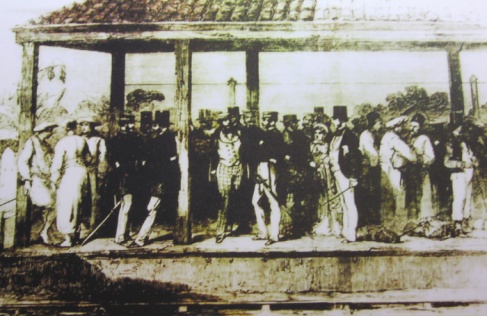
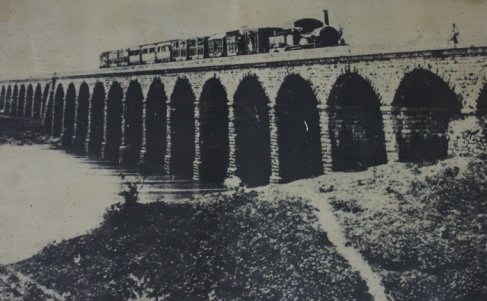
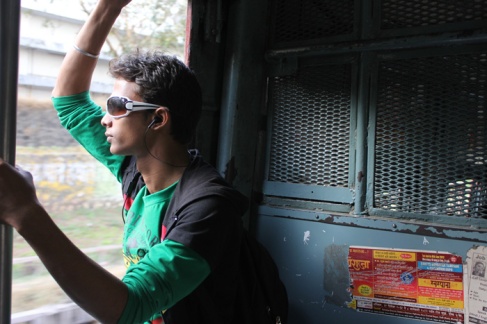
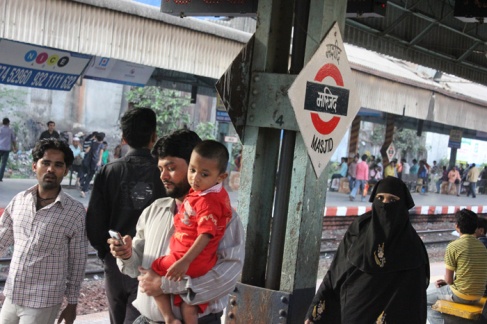
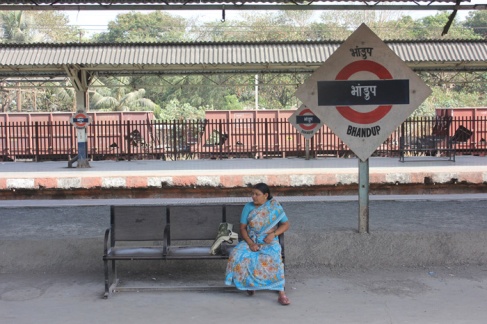
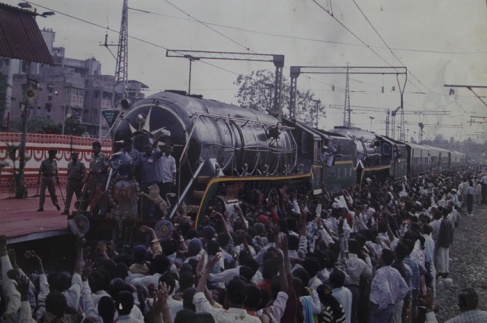
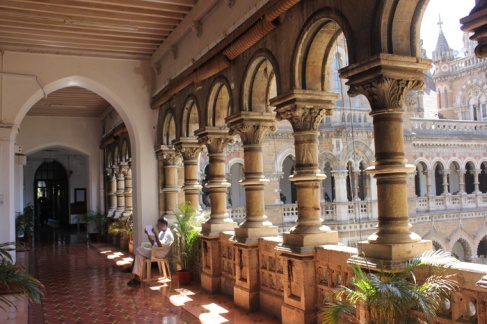
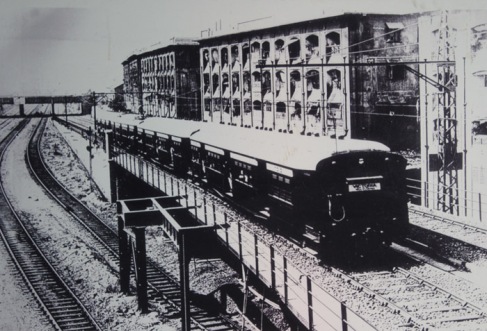
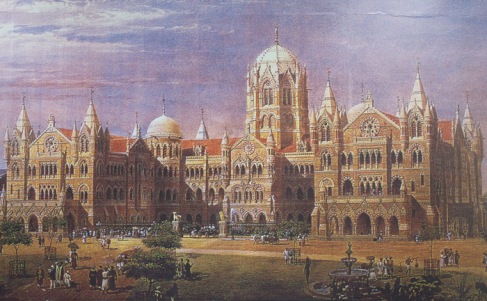
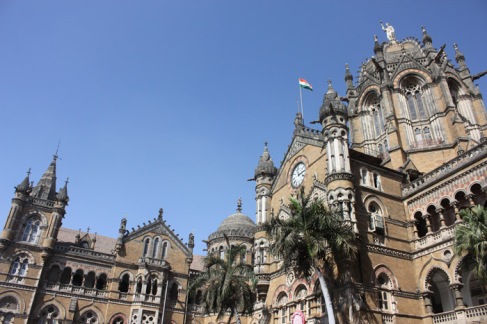
Very very informative! Thanks a ton and keep rocking!! 🙂
FENIL
Hey Fenil!
You are welcome:) Glad you liked it! It was an amazing trip for us and writing it in 1853 words was the clincher!
Very interesting piece. I love retracing historic routes like these. And the Central Railways office looks so ornate!
Thanks Suzy! We love doing it too. You cannot imagine what beautiful old buildings our railway stations are housed in. All lying scattered in forgotten corners of India. And amazing heritage rail journeys too.
Exquisite piece of an article this one is. Worth keeping in records. Wishing you all the best for your future journeys and hope you re-discover the Great Indian railways for us.
Cheers!
Hi Prasad, thanks for all the praise! We really loved working on this piece, coz we just love train journeys & of course the amazing network that’s the Indian Railways. Have you read our piece on Matheran and its Hill Railway? And iconic dishes you get at various railway stations, for Rail Bandhu?
Hi.rare information on Indian Railway, we must thank to Mrs Falkland Wife of governor of Bombay for inaugural of Historic railway on 16th April 1853. All British engineers have done excellent job. I would say that British have given a best gift i.e. Railway. Dhanaji
Ithought I knew all about Rail but I was wrong.
Really great and helpful for a reader or Mumbaikar like me thank you